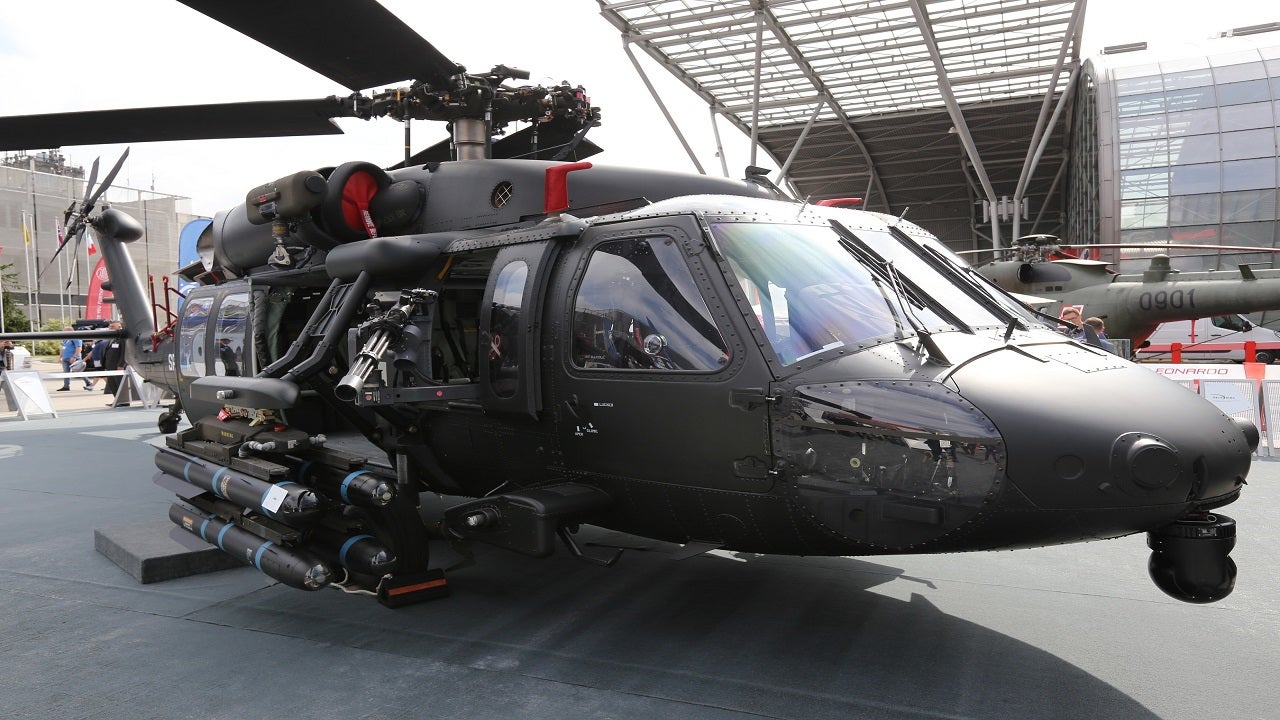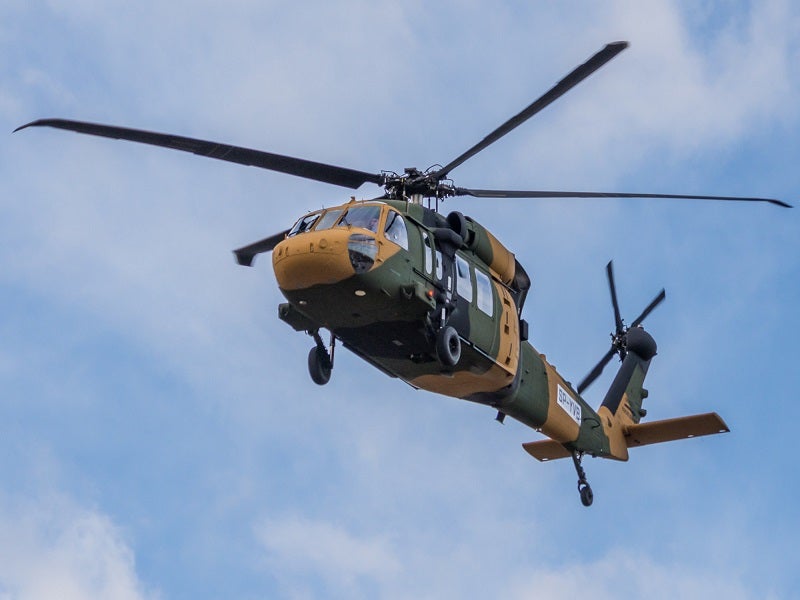The Sikorsky S 70 Helicopter: A Deep Study Its Design and Efficiency
The Sikorsky S 70 Helicopter: A Deep Study Its Design and Efficiency
Blog Article
High-Performance Multi-Role Rotorcraft Featuring Advanced Cockpit Technologies and Integrated Sensor Systems
The world of rotorcraft technology has actually seen noteworthy improvements in current times, particularly in the world of high-performance multi-role rotorcraft equipped with sophisticated cockpit modern technologies and perfectly incorporated sensor systems. These technologies have not only increased the operational abilities of rotorcraft yet have also significantly affected contemporary aeronautics procedures on numerous fronts. From boosted goal versatility to improved functional performance, the convergence of advanced cockpit technologies and integrated sensor systems has actually introduced a brand-new period of opportunities for rotorcraft applications. In the following conversation, we will certainly discover the development of rotorcraft innovation, explore the realm of advanced cockpit innovations, and examine the effects of incorporated sensor systems on the operational versatility and performance of contemporary rotorcraft.
Evolution of Rotorcraft Innovation
The development of rotorcraft innovation has actually been noted by considerable improvements in aerodynamics, materials, and propulsion systems, shaping the capabilities and performance of modern-day rotorcraft. Wind resistant improvements have enhanced the efficiency and maneuverability of rotorcraft, allowing for enhanced rate, dexterity, and stability throughout trip (sikorsky s 70). Advancements in materials, such as making use of composite products and advanced alloys, have brought about lighter yet stronger rotorcraft structures, boosting overall efficiency and resilience. In addition, developments in propulsion systems, consisting of more powerful engines and innovative propulsion innovations, have actually made it possible for rotorcraft to achieve higher altitudes, faster speeds, and higher payloads.
These improvements have not only transformed the abilities of rotorcraft yet have likewise broadened their applications across various industries, including army, commercial, and emergency services. The continual advancement of rotorcraft modern technology remains to drive advancement in the field, pushing the borders of what is feasible and shaping the future of vertical trip.
Advanced Cabin Innovations
Building upon the fundamental developments in the rules of aerodynamics, products, and propulsion systems, the realm of rotorcraft technology currently changes emphasis in the direction of introducing Advanced Cabin Innovations. The combination of innovative innovations within the cockpit environment plays a crucial duty in improving the functional abilities, safety, and effectiveness of modern rotorcraft. sikorsky s 70. Advanced Cabin Innovations encompass a wide variety of attributes developed to provide pilots with boosted situational awareness, structured data monitoring, and user-friendly control interfaces
One of the vital innovations in cockpit layout is the implementation of glass cabins, which replace typical analog evaluates with high-resolution display screens. These digital systems supply adjustable layouts, real-time data assimilation, and improved readability, allowing pilots to accessibility important information at a glance. In addition, advanced avionics systems, such as fly-by-wire controls and enhanced truth display screens, are reinventing just how pilots communicate with the airplane, permitting for precise control and enhanced decision-making abilities.


Including innovative cockpit advancements not just improves pilot performance however likewise adds to general mission effectiveness and safety in complicated functional atmospheres. By leveraging state-of-the-art innovations within the cabin, rotorcraft manufacturers are establishing brand-new standards for operational quality and goal success.
Integrated Sensing Unit Solutions
With the advancement of rotorcraft technology, the combination of innovative Integrated Sensor Solution has ended up being paramount in improving functional effectiveness and safety. These Integrated Sensing unit Equipments encompass a vast range of modern technologies that supply critical data for various functions such as navigation, surveillance, targeting, and environmental monitoring. By effortlessly incorporating sensors like radars, cams, lidar, and infrared systems right into rotorcraft, drivers can take advantage of boosted situational recognition, boosted goal capabilities, and reduced pilot workload.
One trick benefit of Integrated Sensor Equipments is their capacity to collect real-time data and supply workable understandings to pilots and goal operators. As an example, advanced radar systems can detect and track targets over long distances, enabling very early danger discovery and efficient reaction planning. Additionally, integrating electro-optical and infrared electronic cameras makes it possible for rotorcraft to perform reconnaissance and monitoring goals with accuracy and precision.
Fundamentally, the combination of reference innovative sensor innovations into rotorcraft not only enhances functional efficiency but additionally adds dramatically to overall goal success and staff safety and security. As rotorcraft continue to progress, the role of Integrated Sensing unit Solution will undoubtedly remain at the leading edge of innovation in the aerospace industry.
Operational Flexibility and Efficiency
Enhancing operational flexibility and effectiveness in rotorcraft is an all-natural progression from the combination of innovative Integrated Sensor Equipments. By leveraging the insights and information given by these advanced sensor systems, rotorcraft can maximize their performance across different objectives and settings.
Functional versatility encompasses the capability of rotorcraft to adjust to various functions and circumstances efficiently. With advanced cabin modern technologies and integrated sensor systems, rotorcraft can perfectly shift between tasks such as search and rescue, medical emptying, monitoring, and extra. This convenience enhances the rotorcraft's capability to satisfy varied functional demands without requiring considerable reconfiguration.
Efficiency in rotorcraft operations is crucial for optimizing objective efficiency and resource usage. Integrated sensor systems play a critical role in improving functional efficiency by offering real-time data on weather conditions, terrain mapping, target monitoring, and a lot more. This data enables pilots to make informed choices quickly, optimize trip paths, conserve gas, and improve overall goal efficiency.
Effect on Modern Aeronautics Operations

Additionally, the assimilation of innovative sensors promotes enhanced mission preparation and execution, enabling rotorcraft to do a variety of jobs with enhanced accuracy. From search and rescue procedures to aerial firefighting and police goals, the abilities of modern rotorcraft outfitted with advanced cockpit technologies and incorporated sensing unit systems are exceptional.
Furthermore, Look At This the influence of these developments prolongs past functional efficiency to cost-effectiveness and sustainability. By optimizing flight courses, gas consumption, and maintenance routines, high-performance rotorcraft outfitted with innovative cabin technologies and sensors add to lowering operational costs and environmental effect, making them essential possessions in modern-day aeronautics procedures.
Verdict
To conclude, the high-performance multi-role rotorcraft with sophisticated cabin modern technologies and incorporated sensor systems stands for a considerable advancement in aeronautics modern technology. These innovations enhance operational adaptability and performance, eventually impacting modern-day aeronautics procedures in a positive way. The assimilation of these innovative modern technologies enables enhanced capabilities and efficiency in different objective scenarios, showcasing the proceeded improvement of rotorcraft innovation in the aviation sector.
The realm of rotorcraft technology has actually seen significant improvements in recent times, specifically in the realm of high-performance multi-role rotorcraft equipped with sophisticated cockpit technologies and flawlessly incorporated sensor systems. From boosted objective adaptability to improved functional efficiency, the convergence of advanced cabin innovations and integrated sensor systems has actually ushered in a new period of opportunities for rotorcraft applications. In the complying with conversation, we will explore the development of rotorcraft technology, dig right into the realm of innovative cockpit innovations, and take a look at the effects of navigate here integrated sensing unit systems on the operational flexibility and performance of modern-day rotorcraft.

Report this page